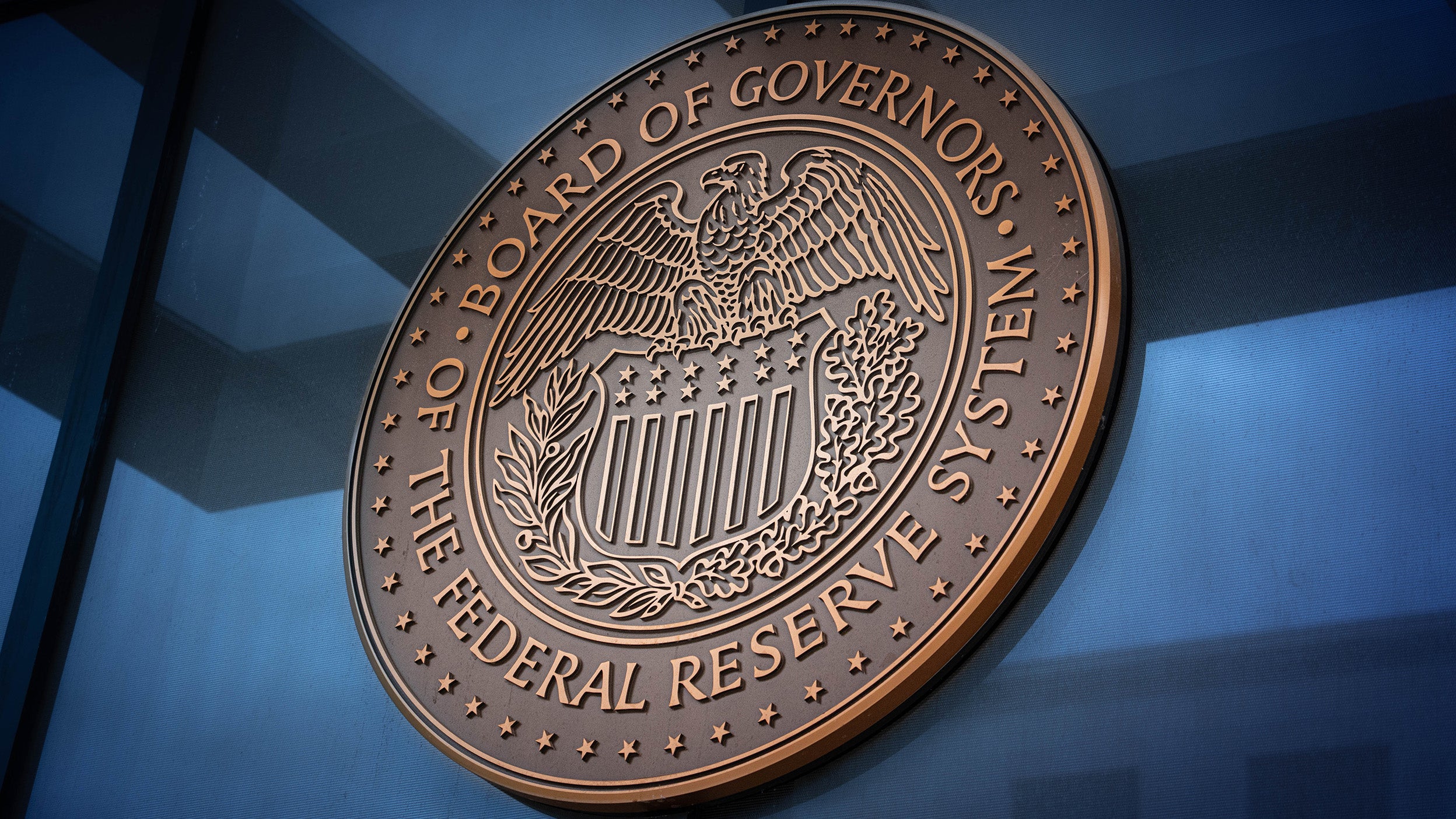
Markets and Economy Navigating Fed monetary policy uncertainty and the markets
A rate cut, which markets are pricing in despite Fed member differences, and an expected improving economy in 2026, could support stocks.

The economies, markets, and currencies of other countries are expected to begin to catch up after long US outperformance.
The European Central Bank and People’s Bank of China have begun significant easing; but US monetary policy isn’t expected to be as accommodative.
The rest of the world is planning to spend more on defense and infrastructure, led by Germany, which agreed on a draft budget.
The Fourth of July, the US Independence Day, is good a time to take stock of the state of the United States. The first half of the year saw US stocks underperform the UK,1 the US dollar reach a three-year low,2 and Germany lead the way on fiscal support through defense and infrastructure spending. How does this all add up to for the sustainability of American exceptionalism?
This week, we share from both sides of the pond, with UK-based Ben Jones, Director of Macro Research, and US-based Brian Levitt, Global Market Strategist.
Ben: I hope you had a happy Fourth.
Brian: Thank you. I always appreciate a good word from our friends across the pond, even if we did part ways a couple of centuries ago.
Ben: We may have parted ways but look at us now. Reunited in print.
Brian: A beautiful friendship. You must be pleased this year. The MSCI United Kingdom US Dollar Index is up 19.26% year to date, compared to 6.20% for the S&P 500 Index.1
Ben: Well sort of. It’s nice to see the UK reclaim its rightful place ahead of the US. But when I look at my portfolio as a UK investor, in the first half of 2025, I see only a 9.00% gain on MSCI United Kingdom Index in pound sterling (GBP) terms, and I’m nursing a loss of 3.05% on my S&P 500 Index position.3 That’s because I’m assuming no currency hedging on the stock positions, the US dollar reached a three-year low at the end of the first half of 2025, and GBP strengthened 9.72% against the dollar in the first half of 2025.2
Brian: That may explain why you’re more focused on the potential end of American exceptionalism than I am. Where we stand often depends on where we sit.
Ben: Perception is reality indeed. I’m sure you’re quite content with a 6.20% year-to-date advance in the S&P 500 Index,1 especially given the political uncertainty and market volatility in US markets during the first half of the year.
Brian: Particularly following two consecutive years of returns greater than 25%.4 That still seems exceptional to me. What do you mean when you talk about the end of US exceptionalism?
Ben: I don’t really like the term “US exceptionalism.” It’s far too blunt to really describe what’s going on now. I think the US stock market has lost some of its shine this year and expectations coming into 2025 were too lofty. But I’m not convinced that US stocks will fall in absolute value over any meaningful time horizon. Rather, I just think that other markets will outperform the US because they’re starting to beat depressed expectations. But I strongly believe the US dollar will weaken further.
That said, I’m convinced the US will still be a brilliant place to live, work, and visit. I enjoyed a recent visit to Texas — great BBQ by the way.
Brian: I assumed as much. Still, you’ve held to your view even as US stocks and bonds have rallied over the past two months.5
Ben: Yes, my view remains unchanged. And as you know so well, markets don’t move in straight lines. My thesis is that the economies, markets, and currencies of other countries will begin to catch up to the US after a prolonged period of its outperformance. And that it’s going to be a bumpy ride with plenty of twists and turns along the way.
Brian: US-based investors have been hearing that for a long time, but they finally saw it play out in the first half of 2025. Is this a case of a broken clock being right twice a day, or something more sustainable?
Ben: I believe it’s more sustainable. It’s largely driven by the idea that US growth, relative to the rest of the world, will moderate and and that growth across much of the rest of the world may be better than expected.
Brian: Even Federal Reserve (Fed) Chair Jerome Powell suggested that the Fed would likely be lowering interest rates if it wasn’t for the tariffs being imposed by the Trump administration.
Ben: Maybe. I’ll admit to questioning my view that the Fed wouldn’t cut rates in 2025. I’m sticking with it for now but will pivot if the labor market data worsen. I‘m not dogmatic, but I maintain, for now, that US monetary policy will likely not be as accommodative as it otherwise might have been. But other central banks, including the European Central Bank and the People’s Bank of China, have already begun significant easing.
I think the more meaningful, and underappreciated, story is that the rest of the world is getting its act together and spending more on defense and infrastructure, led by Germany. Last week, the German federal government agreed on its draft budget for 2025. It plans to spend more than 200 billion euros on defense and infrastructure this year and to raise more than 3% of gross domestic product in new debt. That represents a large increase in bond issuance.
Brian: Fiscal support from the traditionally austere Germans. Wow! Perhaps it would have been more helpful during the Global Financial Crisis or the pandemic.
Ben: I agree, but it didn’t happen then. The US fiscal response during those periods strongly supported the growth that helped sustain American exceptionalism. Now the fiscal momentum is coming from Germany. 2025 is going to be one for the history books.
Brian: At the same time, valuations outside the US have been more attractive.6
Ben: That’s right. I would also argue that the US dollar has remained overvalued compared to the currencies of its major trading partners. It likely has further room to decline.
Brian: What’s driving the dollar’s decline? It doesn’t appear to be an exodus of foreign investors from US dollar assets.
Ben: Nope, no exodus as far as I can see. Confidence in US financial assets is challenged, but we’re not seeing a total loss of confidence. Rather, in my opinion, the dollar’s decline reflects foreign investors wanting to diversify their large dollar positions, and some will likely choose to hedge those positions. So far, we’re not seeing much evidence in things like exchanged-traded fund (ETF) flows that there are large sales of US assets, but rather new non-US money is finding its way into non-US markets. The view that “There Is No Alternative (TINA)” to US markets has faded. TINA has turned.
Brian: Could you imagine a scenario in which foreign investors did lose complete confidence in US assets?
Ben: I can, although that would require a significant deterioration in faith in US institutions. Questions are being asked, but we’re not there yet. I think we have to have faith that checks and balances in the US will prevail.
Brian: Then let us hope for continued independence at the Fed.
Ben: Absolutely. I don’t know about you, but I wouldn’t want to be in Chair Powell’s seat.
Brian: The end of American exceptionalism sounds more like an argument for diversification into non-US stocks, bonds, and currencies.
Ben: Yes. The US will continue to have unique qualities that set it apart from many other nations. I will plan to continue to invest in innovative US businesses, engage with US culture, and travel to the States as often as I can. I have simply increased my exposure to assets outside the US and expect to maintain those positions. And I’m hedging my currency exposure for the first time, well ever.
Brian: I am glad we cleared that up.
Ben: So am I.
Brian: Regardless of whether American exceptionalism is fading, one thing remains constant: the enduring strength of transatlantic dialogue.

A rate cut, which markets are pricing in despite Fed member differences, and an expected improving economy in 2026, could support stocks.

We believe global equities may continue to rise in the new year, and we expect new opportunities to be unlocked as market leadership evolves.

Get insight on the recent sell-off in the artificial intelligence trade, the potential for a Santa Claus rally, and the K-shaped economy.


Get the latest information and insights from our market strategists, investment experts, and tax and estate specialists.
You may unsubscribe from these communications at any time by emailing us at inquiriescanada@invesco.com or by calling us at 1.800.874.6275
Important information
NA4621589
Image: MONICA MURPHY/ STOCKSY
Some references are US-specific and may not apply to Canada.
All figures in USD unless otherwise stated.
All investing involves risk, including the risk of loss.
Past performance does not guarantee future results.
Investments cannot be made directly in an index.
This does not constitute a recommendation of any investment strategy or product for a particular investor. Investors should consult a financial professional before making any investment decisions.
The Bloomberg US Treasury Index measures US dollar-denominated, fixed-rate, nominal debt issued by the US Treasury.
Fixed income investments are subject to credit risk of the issuer and the effects of changing interest rates. Interest rate risk refers to the risk that bond prices generally fall as interest rates rise and vice versa. An issuer may be unable to meet interest and/or principal payments, thereby causing its instruments to decrease in value and lowering the issuer’s credit rating.
Diversification does not guarantee a profit or eliminate the risk of loss.
Monetary easing refers to the lowering of interest rates and deposit ratios by central banks.
Gross domestic product (GDP) is a broad indicator of a region’s economic activity, measuring the monetary value of all the finished goods and services produced in that region over a specified period of time.
An investment cannot be made into an index.
The MSCI All Country World (ACWI) ex USA Index is an unmanaged index considered representative of large- and mid-cap stocks across developed and emerging markets, excluding the US. The index is computed using the net return, which withholds applicable taxes for nonresident investors.
The MSCI UK Index Total Return Index (USD) is designed to measure the performance of the large- and mid-cap segments of the UK market.
The S&P 500® Index is an unmanaged index considered representative of the US stock market.
The risks of investing in securities of foreign issuers can include fluctuations in foreign currencies, political and economic instability, and foreign taxation issues.
In general, stock values fluctuate, sometimes widely, in response to activities specific to the company as well as general market, economic and political conditions.
The US Dollar Index measures the value of the US dollar relative to the majority of its most significant trading partners.
The opinions referenced above are those of the author as of July 7, 2025. These comments should not be construed as recommendations, but as an illustration of broader themes. Forward-looking statements are not guarantees of future results. They involve risks, uncertainties and assumptions; there can be no assurance that actual results will not differ materially from expectations.
This link takes you to a site not affiliated with Invesco. The site is for informational purposes only. Invesco does not guarantee nor take any responsibility for any of the content.